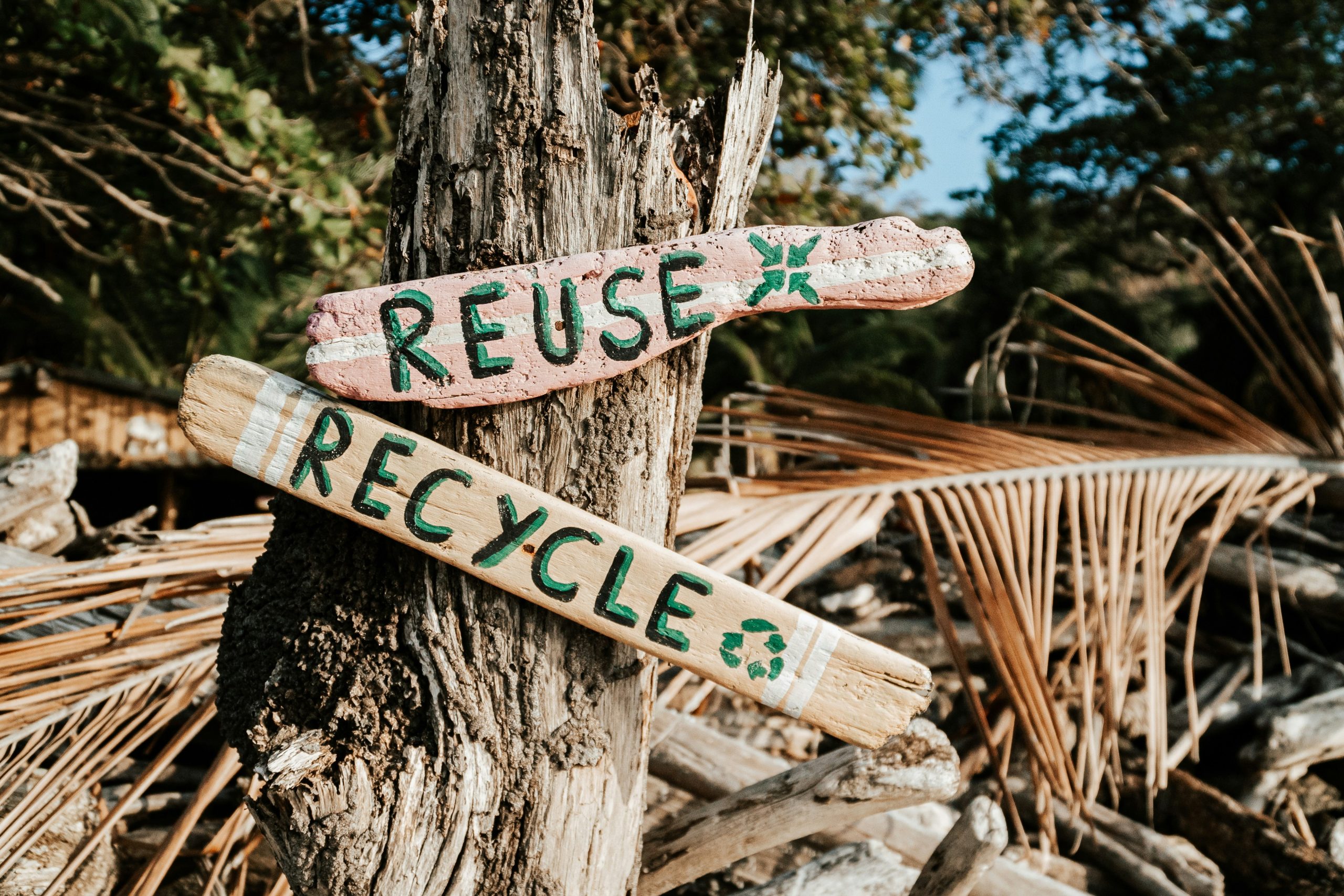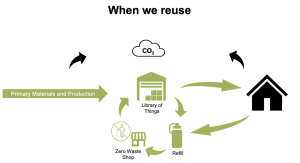For the second instalment in our One Carbon Change blog series we are looking at the concept of reuse (or items) to reduce carbon impacts. When looking to reduce your carbon impact, one option is to consider reuse of your unwanted items. Reuse of your items can be selling on or donating items which are usable (but perhaps unwanted by you) to extend the life of the product. A second option might be purchasing items that have previously been used, and a third would be repairing a broken item so it can be reused. These activities can save significant amounts of carbon when compared to both landfill and recycling. It is noteworthy that the second highest priority of the waste hierarchy is ‘preparing for reuse’[1] extends the useful life of an item and provides key benefits such as cost, material and carbon savings. In this blog we are focussing on how reuse can lead to positive carbon savings. To calculate the savings from reuse, the WRAP Benefits of Reuse Tool[2] was used to calculate the impact of different methods of disposal (reuse, preparation for reuse, recycling and landfill).
Figure 1 illustrates the average kilograms of CO2 equivalent saved via reuse activities compared to recycling and landfill of home electricals. This ranges from laptops and other small appliances, to TVs and washing machines. Figure 1 shows that reuse has significant carbon savings compared to recycling[3] (86%) and landfill (100.9%) disposal of an item. Figure 2 shows specific figures for the reuse of a TV through three direct reuse channels, recycling, and landfill disposal.
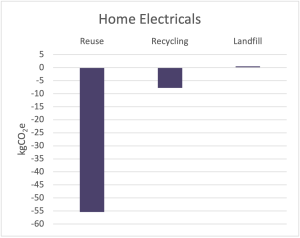
For home working or office equipment, reuse can help significantly lower your carbon impact for disposal. This can be done through websites and organisations such A Good Thing[4] where businesses can list items they no longer need, and charities can use the app to find items they require such as laptops, screens or desks.
Reusing a desk for free (or for money) can save around 12.7 kgCO2e per desk. The charity shop reuse route emits around 9.3 kgCO2e per desk due to the operational aspect of charity shops such as electricity use, heating and water use however, this is still significantly less than the 19.8 kgCO2e per desk landfilled and -0.526 kgCO2e per desk recycled.
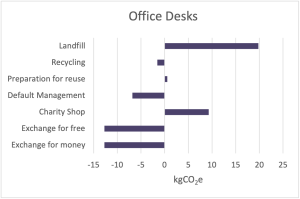
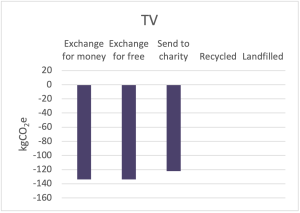
Overall, reusing an item can save large amounts of carbon compared to disposing of the same item through landfill. Purchasing reused items helps to reduce your carbon footprint as well as saving raw materials and it removes the associated production related emissions. . Utilising reuse channels for furniture, electricals or sending unwanted items for reuse or recycling where possible can significantly lower your business’s carbon footprint. This change can be taken through from a business practice to a lifestyle change that any individual can make for a range of purchases. For example, the new base model iPhone 15 produces 56 kgCO2e in production, use and transport, with around 80% of that resulting from the materials and production stage[5]. Furthermore, by reusing a t-shirt you can save c.2 kgCO2e per t-shirt[6]. By reusing items, your carbon footprint can be reduced as the manufacturing process is avoided in purchasing a used or refurbished item.
[1] After prevention – i.e. choosing not to buy or buying with less packaging etc.
[2] WRAP 2015, Benefits of Reuse Tool
[3] Residual waste disposal (first level), 100% recycling (second level).
[4] A Good Thing UK Charity, Charity | A Good Thing
[5] Apple_Environmental_Progress_Report_2024_Global.pdf
[6] iPhone Lifecycle: What Is The Carbon Footprint of an iPhone (compareandrecycle.co.uk)
Credibly Green provide technical advice to clients on all things carbon and sustainability. See www.crediblygreen.com or call 01746 552423 or email support@crediblygreen.com, emily@crediblygreen.com

